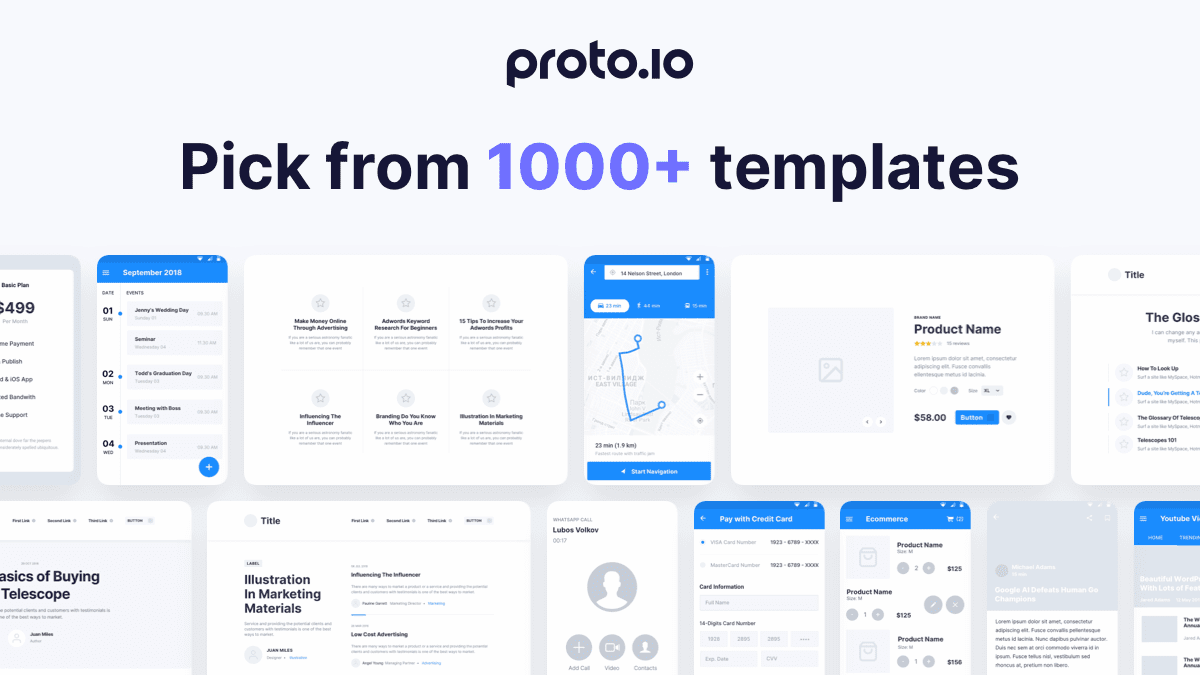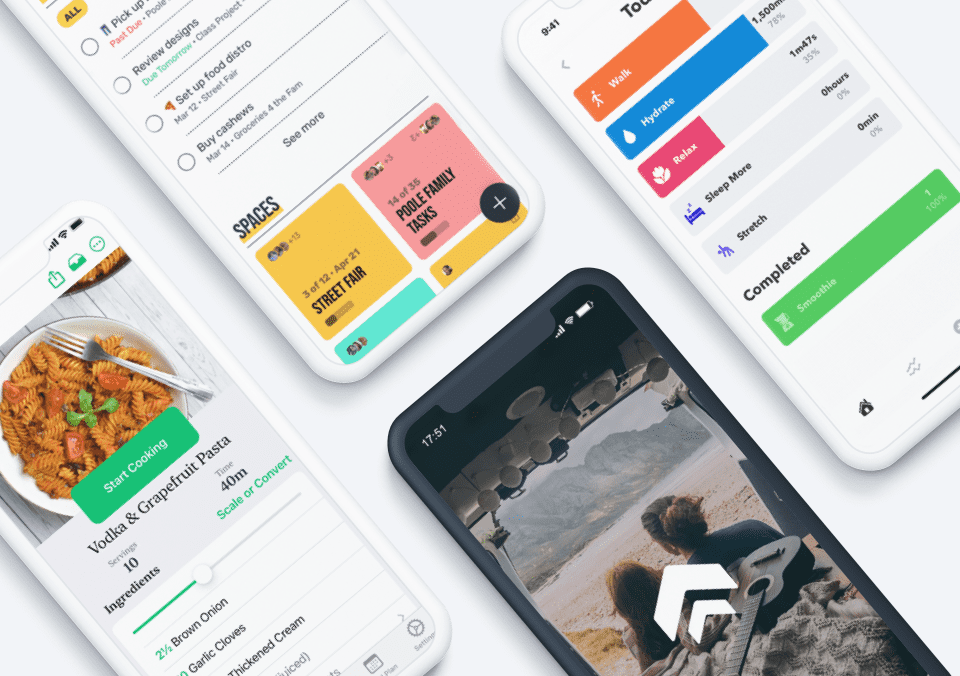When was the last time you had a seemingly interesting product, website, or design idea but didn’t exactly know how to go about it? The road from putting an idea into words or visuals to convincing people it’s worth their time can often be long and intimidating. Prototyping appeared as a solution to this problem and quickly gained ground across many industries.
Seeing as the demand for prototyping only kept growing, it came as no surprise that new features and capabilities started flooding the market. One of them was the appearance of templates, which are nowadays considered a staple of the prototyping process. This article highlights 5 benefits of templates that made them so popular with all types of users.
Save time
The most obvious and major reason that made templates the top requested and used feature in the industry. The concept of ready-to-use blocks and elements became valuable in the early design and visualization process simply because designing just about anything from scratch takes significant time.
Particularly UI components require a lot of effort and attention to detail, thus leaving a lot of space for human error. But also calculating spacing, layouts, and everything in between can be a huge time burner, even for the most skilled designer. Templates solve all of these problems by providing everything ready-made, with the user only having to make minor adjustments to fit their project’s needs.
Templates usually come in two forms: either integrated to the prototyping tool in the form of a library or as an importable kit purchased from a third-party website. Either way, the time benefit is unbelievable, and you need to see it to believe it yourself!
Work with no coding or design skills
Prototyping as a concept became so popular exactly because it is very friendly to users with minimum or zero design and coding experience. At the end of the day, just anyone could have a great idea for an app or a website, and it would almost feel like a waste for these ideas to remain unexplored due to the lack of hard skills.
Templates take that concept one step further. Not only do they require zero design skills to be used, but they also completely remove the need for design thinking. Templates are pre-designed with specific design principles in mind, such as hierarchy and accessibility. Therefore, it is safe to assume that using them will not require much extra editing to look professional.
Essentially, all the average user has to do is drag and drop or import an element or screen, change its colors if needed and add photos or text as they see fit. No more second-guessing when it comes to pitching an early idea!
Add design consistency
This is a major convenience for medium and high-fidelity prototyping that even professional designers can benefit from.
As mentioned earlier, projects containing UI components are very prone to human error. Additionally, with all the new iOS and Android updates and many different design systems, such as Material Design, it becomes extremely tough to be consistent. There are, however, cases where making a prototype realistic is necessary; if not in the early ideation stage, then for sure when looking for stakeholder feedback or sign-off.
Templates are designed in sets, most of the time abiding by specific design principles or systems. Many look extremely realistic, mimicking exactly the look and feel of a real interface. That ensures complete peace of mind when putting together a high-fidelity prototype that needs to look like a real website or application.
Enjoy project scalability
One of the benefits of prototypes is that contrary to fully designed or developed projects, they are much easier to scale up. For example, if a potential app has different versions for different types of users, it is quite simple and fast to showcase them all via prototypes.
Templates play a vital role in this process. Users can reuse them as many times as needed, adjust them in just a few quick steps, and basically create an endless amount of pages. Additionally, iterations on template-based prototypes are much easier and can even happen on the go, making it easy to evaluate new ideas and decide which is the right way to go.
Medium fidelity prototype of an e-commerce website created with templates: Florist Website.
Get inspired
One of the main problems in the creative process is the creator’s block. This common issue sees no experience level or position, and it can really make work feel frustrating and not rewarding at all.
As already mentioned, templates usually come in libraries or sets with a specific theme. That means that each one offers multiple similar (but not identical) options for the same thing. Especially when we talk about blog or website design, where options literally feel endless, browsing through template kits is a great way to discover new page layouts and styles.
In the end, a project can comprise different screens from different libraries, allowing an endless amount of possibilities. Simply dedicate some time to discover what’s available to you, and you’ll be surprised at all the combos you can come up with!
Enjoy the full scale of template prototyping with Proto.io
Proto.io is all about helping each, and every user out there bring their idea to life in no time. The powerful prototyping tool contains a rich library of over 1,000 ready-to-use blocks and elements for mobile and web. You can simply drag and drop any of them to your canvas to start creating prototypes of any fidelity within minutes.
Build anything you can imagine, from web pages to mobile apps for iOS or Android and from news feeds to social media interfaces, with minimum time investment. All of Proto.io’s out-of-the-box templates are 100% customizable, so you can easily adapt them to your project’s unique visual and functional needs.
Visit this page for a better overview of what you can achieve with Proto.io’s templates.
Proto.io helps you bring your idea to life in no time, with no coding skills required. It’s ideal for UX designers, entrepreneurs, product managers, marketers, students, and anyone with a great idea. Sign up for a free 15-day trial to start building your first prototype today!








